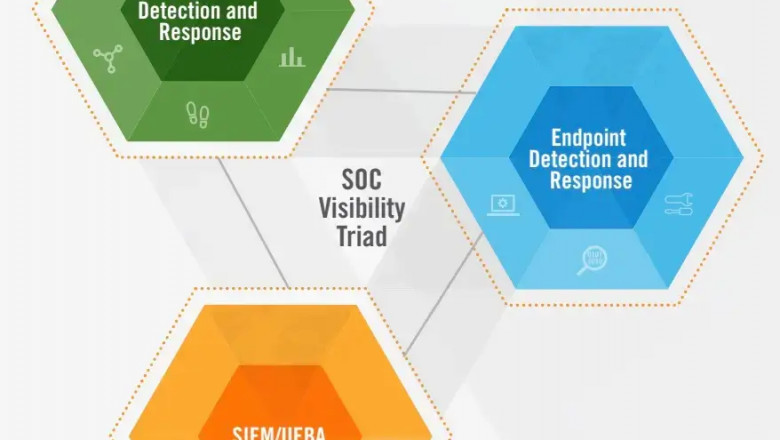views
In today's dynamic threat landscape, the traditional perimeter defense, primarily reliant on firewalls, is no longer sufficient to secure an organization. The rise of remote work, cloud adoption, and a proliferation of diverse endpoints has blurred the network boundary, making every device a potential entry point for attackers. This paradigm shift has amplified the critical role of endpoint security within a Security Operations Center (SOC).
The Threat and the Rise of the Endpoint
Gone are the days when malware was a simple, signature-based threat. Modern cybercriminals employ sophisticated techniques, including fileless attacks, zero-day exploits, ransomware, and advanced persistent threats (APTs), often targeting the weakest link: the endpoint. Laptops, desktops, mobile devices, servers, virtual machines, and IoT devices all represent an expanded attack surface, each with unique vulnerabilities. An attacker who compromises a single endpoint can gain a foothold, move laterally within the network, and access critical data or systems. This evolution necessitates a proactive and adaptive approach to endpoint protection.
What is Endpoint Security in a SOC Context?
Endpoint security, or endpoint protection, encompasses the practices, solutions, and policies designed to protect end-user devices from malicious activity. Within a SOC, endpoint security is not merely about installing antivirus software. It's a comprehensive, centrally managed strategy that provides continuous visibility, detection, investigation, and response capabilities for all connected devices, regardless of their location.
The SOC leverages endpoint security solutions to:
-
Gain complete visibility: Understand what's happening on every endpoint in real-time, including processes, network connections, file changes, and user activities.
-
Proactively detect threats: Identify suspicious behaviors, anomalies, and known attack patterns that traditional perimeter defenses might miss.
-
Rapidly respond to incidents: Automate responses to contain threats, isolate compromised devices, and prevent lateral movement.
-
Facilitate forensic analysis: Collect rich endpoint data for detailed investigation and root cause analysis after an incident.
-
Enhance threat hunting: Enable security analysts to proactively search for hidden threats and indicators of compromise (IoCs) within the endpoint data.
Key Components of Modern Endpoint Security Solutions
Modern endpoint security solutions are multi-layered and integrate various capabilities, moving beyond simple prevention:
-
Next-Generation Antivirus (NGAV): Unlike traditional signature-based AV, NGAV employs advanced techniques like machine learning, AI, and behavioral analysis to detect both known and unknown (zero-day) threats.
-
Endpoint Detection and Response (EDR): EDR solutions are the cornerstone of endpoint security in a SOC. They continuously monitor endpoint activities, collect telemetry data, and use analytics to detect suspicious behavior. EDR provides real-time and historical visibility, automated response capabilities (e.g., quarantining files, isolating devices), and tools for in-depth investigation and threat hunting.
-
Data Loss Prevention (DLP): DLP features prevent sensitive data from leaving the organization's control, whether accidentally or maliciously, by monitoring and controlling data transfers from endpoints.
-
Endpoint Firewall: Provides granular control over network traffic flowing to and from the endpoint, complementing the perimeter firewall.
-
Vulnerability Management: Identifies and prioritizes vulnerabilities on endpoints, facilitating timely patching and configuration hardening.
-
Device Control: Manages access to external devices (e.g., USB drives) to prevent data exfiltration or malware introduction.
-
Threat Intelligence Integration: Continuously updates the security system with the latest threat information, including new malware strains, attack vectors, and vulnerabilities.
-
Centralized Management: A unified console for managing security policies, deploying updates, monitoring endpoint health, and generating reports across all endpoints.
EDR and XDR
Endpoint Detection and Response (EDR) has revolutionized how SOCs manage endpoint security. By providing deep visibility into endpoint activities, EDR allows security teams to "shoulder surf" an adversary's actions in real-time, observe commands, and understand techniques, even as they attempt to breach or move around an environment. This detailed context accelerates investigations and facilitates faster remediation.
The evolution from EDR is Extended Detection and Response (XDR)






















Comments
0 comment